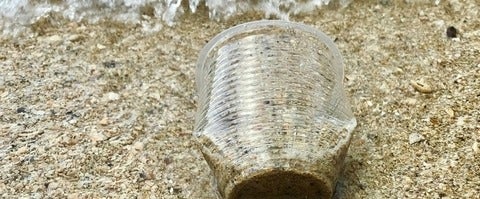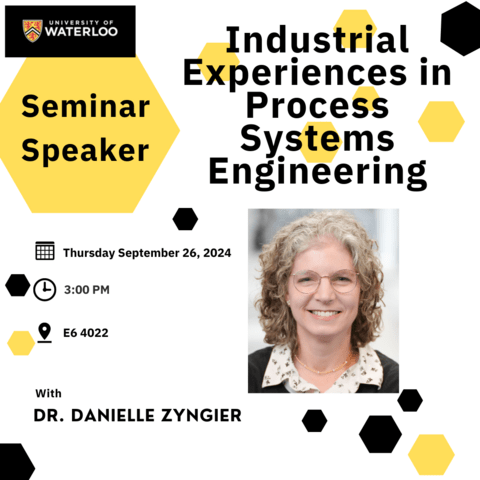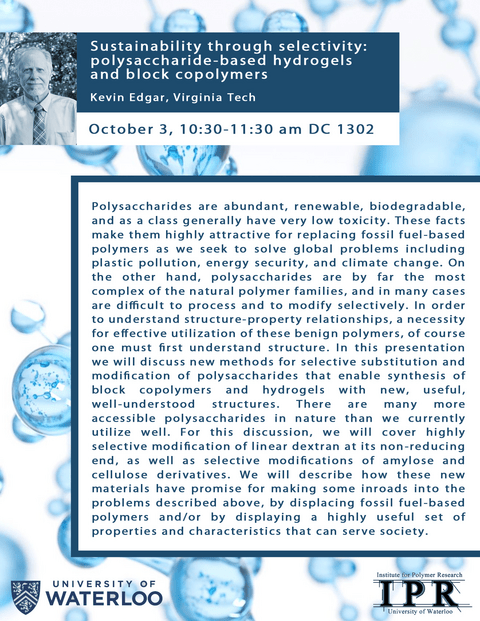Welcome to Chemical Engineering at the University of Waterloo
As part of Canada's largest engineering school and most innovative university, the Department of Chemical Engineering at the University of Waterloo is home to approximately 1,000 students, faculty and staff, and has thousands of alumni worldwide.
Our Department consistently ranks among the top two universities in Canada and the number one university in Ontario in Chemical Engineering according to the Shanghai Academic Ranking of World Universities.
In addition to offering undergraduate and graduate programs in chemical engineering, the Department provides academic expertise and support to Waterloo's collaborative nanotechnology and biomedical engineering programs.
The department's collaborative research culture, engaging teaching practices and state-of-the-art facilities create a vibrant learning environment where students are empowered to solve the problems our world faces.
Professor Elisabeth Prince's Polanyi Prize-winning research in degradable and recyclable plastics
In this video, Dr. Elisabeth Prince discusses her research which addresses the plastic waste crisis by creating more degradable and recyclable plastics. Her disruptive research in advanced materials has the potential to have a huge impact on sustainability and environmental remediation and supports Canada’s ambitious goal of achieving zero plastic waste by 2030.
Professor Hamed Shahsavan's micro-medical robotics research
Check out this video about Professor Hamed Shahsavan’s research into developing smart polymers for applications in biomedical robotics. Shahsavan’s research group utilizes shape change to produce movement in the micro-robots. The micro-medical robots have the potential to be used for biopsies, cell transport and drug delivery. He also discusses the critical role of graduate students in research labs.
Chemical Engineering Lab Tour
Join us for a tour of the Chemical Engineering undergraduate labs in the Douglas Wright Engineering Building at the University of Waterloo.
Find out more by exploring the programs, research and news stories on this site.
News
Harnessing nature’s inspiration and the power of the sun to generate fresh water
Professors Michael Tam and Yuning Li have designed a solar-powered desalination device capable of utilizing over 93% of solar energy to produce fresh water from the sea via a thermal evaporation process.
This rate is five times higher than that of current technologies, making it a highly efficient solar-driven desalination system. With a production capacity of approximately 20 litres of fresh water per square meter per day, this device offers a sustainable solution to global freshwater scarcity.
Desalination of water is critical for many coastal nations to produce water for consumption and agricultural activities. Rapid population growth and increasing global water consumption by industry contribute to water scarcity.
Leveraging 3D imaging in the battle against microplastics
Ever heard of the phrase coined by Friedrich Nietzsche, “the devil is in the details”? Professors William Anderson and Boxin Zhao have advanced the battle against microplastic pollution by uncovering the intricate details of how microplastics degrade in the environment. Observation and understanding the fine details of microplastics are key to eradicating them from our environment.
The research group has been able to observe the degradation of micro and nanoplastics with unprecedented detail. In collaboration with the National Research Council (NRC) researchers leveraged 3D imaging technology, which allows for a much deeper understanding of the microplastic degradation process than traditional 2D microscopy.
This detailed observation is the first of its kind, demonstrating the potential of 3D imaging as a powerful tool in microplastic research.
New material promises to transform oil spill cleanup
Professor Tizazu Mekonnen’s research group has developed polymer foam that absorbs and locks in oil, preventing groundwater contamination.
The team designed a novel material that can not only absorb hydrocarbon oil from oil spills but can also lock the oil in, preventing it from leeching into groundwater. The porous material designed from special tri-block co-polymers can absorb eight times its weight or 800% of oil upon direct contact.
Electric transformers and other industries have huge oil storage facilities containing thousands of litres of oil which can leak into groundwater due to unexpected accidents and natural disasters such as hurricanes, tornadoes or earthquakes. Groundwater contamination is extremely difficult to clean up. These accidents can lead to serious environmental damage, posing health hazards to wildlife, and people.
Events
Graduate Seminar| Industrial Experiences in Process Systems Engineering, by Dr. Danielle Zyngier
Industrial Experiences in Process Systems Engineering
Seminar| Sustainability through selectivity: polysaccharide-based hydrogels and block copolymers by Dr. Kevin Edgar
Sustainability through selectivity: polysaccharide-based hydrogels and block copolymers by Dr. Kevin Edgar















